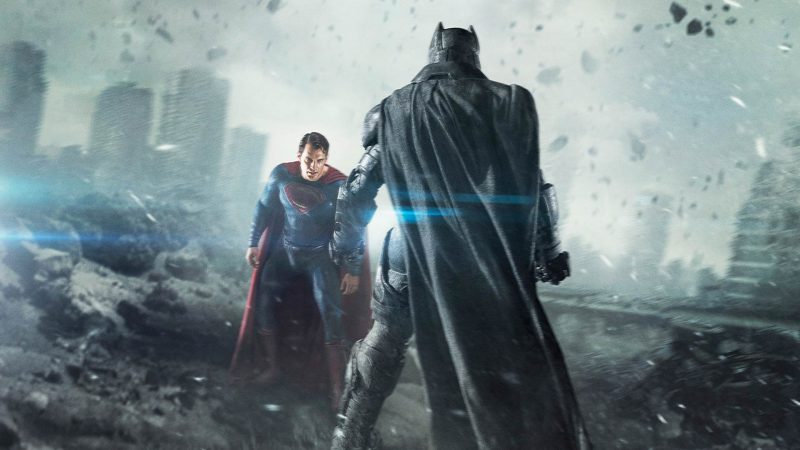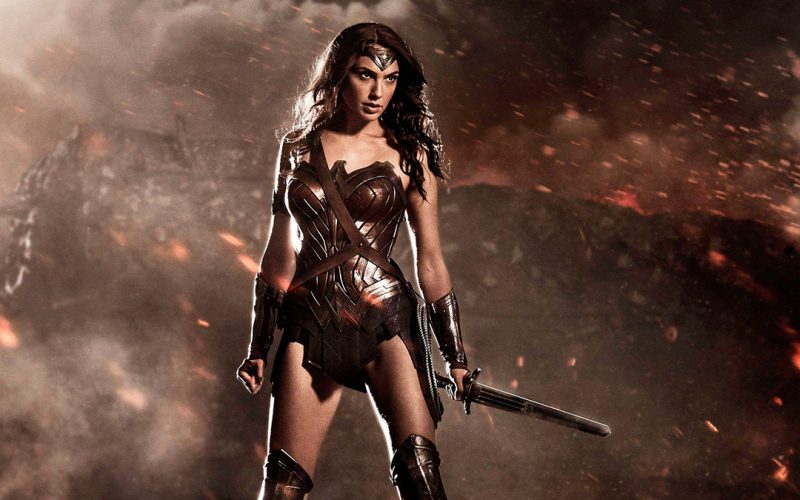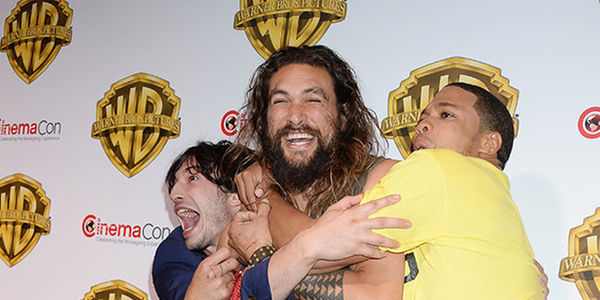Marvel mistakes the DCEU can learn from
"Neither cinematic universe has got it all right, but..."
Whilst the MCU undeniably got off to a better received start than the DCEU, there are some advantages to being a little behind when it comes to on-screen extended universes. Marvel has been paving the way on that front, but DC has the opportunity to learn from some of Marvel’s mistakes.
One of the biggest flaws in the MCU is its structuring. The individual threads leading into the first Avengers movie worked fine, but now the web is so complex that casual viewers will be required to have seen almost 20 films for Infinity War to make any sense. Another common complaint is the lack of lasting consequences throughout the films: that characters don’t tend to retain any of the development they made in previous installations.

Now, whilst no one would say character was a particularly strong suit of
Man of Steel, there was definitely consistent character development for Kal-El and Lois that progressed further in
Batman v. Superman. The core of the characters’ motivations were retained. On the other hand, audiences complained that Steve Rogers and Tony Stark were unrecognizable in
Civil War, not to mention the rest of the ensemble’s reasons for picking a side were weak at best and arbitrary at worst.
Choosing not to give Batman his own origin film was revolutionary, and it took Marvel until
Spider-Man: Homecoming to give their audience the same amount of credit. It takes a lot of guts to realize that origin films aren’t always the way to go — especially when audiences are already attached to such recent franchises starring these characters. With
Wonder Woman, however, it’s a totally different story.
 Wonder Woman
Wonder Woman and
Suicide Squad were received wildly differently by critics and audiences alike, but what both have in common is that, whilst they tie in to the wider universe, they can also convincingly stand alone.
Wonder Woman is the most talked about superhero movie in a long time, and for good reason. Though some might say it follows a pretty standard superhero origin story formula, its one that audiences are hungry for.
While it’s taken the MCU 10 years to announce its first non-white title character in Black Panther, and female title character in Captain Marvel (whenever that might be released!), DC are already doing better with regards to diversity. It’s pretty embarrassing for Marvel that DC managed to swoop in and effortlessly claim the first female superhero film with Wonder Woman, when Marvel fans have been clamoring for a Black Widow movie since her first appearance in 2011.

Though
Justice League still (annoyingly) follows the same pattern of
The Avengers and
Guardians of the Galaxy — a bunch of dudes and one woman — at least there’s some diversity amongst the male members of the team. Jason Momoa and Ray Fisher provide amazing representation for the Pacifica and Black communities, and there is hope that since Ezra Miller is openly queer, his Barry Allen might be too.
The DCEU is being careful not to saturate the already over-saturated market. Not all these heroes are getting origin films, or standalone films. We’ll get introductions to each of the characters through Batman’s recruiting of each of them, then audiences are expected to just go with it. It’s almost as if the DCEU caters more to comic fans, or at least those more familiar with the universe. The Darkseid dream sequence in Batman v. Superman, for example, was completely opaque and alienating for casual viewers, but was an exciting easter egg for those in the know.
Striking this balance is a tricky one, but the DCEU is on top of it’s game right now. Let’s hope
Justice League is as good as we all desperately want it to be!
 Now, whilst no one would say character was a particularly strong suit of Man of Steel, there was definitely consistent character development for Kal-El and Lois that progressed further in Batman v. Superman. The core of the characters’ motivations were retained. On the other hand, audiences complained that Steve Rogers and Tony Stark were unrecognizable in Civil War, not to mention the rest of the ensemble’s reasons for picking a side were weak at best and arbitrary at worst.
Choosing not to give Batman his own origin film was revolutionary, and it took Marvel until Spider-Man: Homecoming to give their audience the same amount of credit. It takes a lot of guts to realize that origin films aren’t always the way to go — especially when audiences are already attached to such recent franchises starring these characters. With Wonder Woman, however, it’s a totally different story.
Now, whilst no one would say character was a particularly strong suit of Man of Steel, there was definitely consistent character development for Kal-El and Lois that progressed further in Batman v. Superman. The core of the characters’ motivations were retained. On the other hand, audiences complained that Steve Rogers and Tony Stark were unrecognizable in Civil War, not to mention the rest of the ensemble’s reasons for picking a side were weak at best and arbitrary at worst.
Choosing not to give Batman his own origin film was revolutionary, and it took Marvel until Spider-Man: Homecoming to give their audience the same amount of credit. It takes a lot of guts to realize that origin films aren’t always the way to go — especially when audiences are already attached to such recent franchises starring these characters. With Wonder Woman, however, it’s a totally different story.
 Wonder Woman and Suicide Squad were received wildly differently by critics and audiences alike, but what both have in common is that, whilst they tie in to the wider universe, they can also convincingly stand alone. Wonder Woman is the most talked about superhero movie in a long time, and for good reason. Though some might say it follows a pretty standard superhero origin story formula, its one that audiences are hungry for.
While it’s taken the MCU 10 years to announce its first non-white title character in Black Panther, and female title character in Captain Marvel (whenever that might be released!), DC are already doing better with regards to diversity. It’s pretty embarrassing for Marvel that DC managed to swoop in and effortlessly claim the first female superhero film with Wonder Woman, when Marvel fans have been clamoring for a Black Widow movie since her first appearance in 2011.
Wonder Woman and Suicide Squad were received wildly differently by critics and audiences alike, but what both have in common is that, whilst they tie in to the wider universe, they can also convincingly stand alone. Wonder Woman is the most talked about superhero movie in a long time, and for good reason. Though some might say it follows a pretty standard superhero origin story formula, its one that audiences are hungry for.
While it’s taken the MCU 10 years to announce its first non-white title character in Black Panther, and female title character in Captain Marvel (whenever that might be released!), DC are already doing better with regards to diversity. It’s pretty embarrassing for Marvel that DC managed to swoop in and effortlessly claim the first female superhero film with Wonder Woman, when Marvel fans have been clamoring for a Black Widow movie since her first appearance in 2011.
 Though Justice League still (annoyingly) follows the same pattern of The Avengers and Guardians of the Galaxy — a bunch of dudes and one woman — at least there’s some diversity amongst the male members of the team. Jason Momoa and Ray Fisher provide amazing representation for the Pacifica and Black communities, and there is hope that since Ezra Miller is openly queer, his Barry Allen might be too.
The DCEU is being careful not to saturate the already over-saturated market. Not all these heroes are getting origin films, or standalone films. We’ll get introductions to each of the characters through Batman’s recruiting of each of them, then audiences are expected to just go with it. It’s almost as if the DCEU caters more to comic fans, or at least those more familiar with the universe. The Darkseid dream sequence in Batman v. Superman, for example, was completely opaque and alienating for casual viewers, but was an exciting easter egg for those in the know.
Striking this balance is a tricky one, but the DCEU is on top of it’s game right now. Let’s hope Justice League is as good as we all desperately want it to be!
Though Justice League still (annoyingly) follows the same pattern of The Avengers and Guardians of the Galaxy — a bunch of dudes and one woman — at least there’s some diversity amongst the male members of the team. Jason Momoa and Ray Fisher provide amazing representation for the Pacifica and Black communities, and there is hope that since Ezra Miller is openly queer, his Barry Allen might be too.
The DCEU is being careful not to saturate the already over-saturated market. Not all these heroes are getting origin films, or standalone films. We’ll get introductions to each of the characters through Batman’s recruiting of each of them, then audiences are expected to just go with it. It’s almost as if the DCEU caters more to comic fans, or at least those more familiar with the universe. The Darkseid dream sequence in Batman v. Superman, for example, was completely opaque and alienating for casual viewers, but was an exciting easter egg for those in the know.
Striking this balance is a tricky one, but the DCEU is on top of it’s game right now. Let’s hope Justice League is as good as we all desperately want it to be!